Best of 2013: Why Far Cry 2 is Better Than Far Cry 3
by Tim
First Published: January 28, 2013
Voted For By: Ian
Reason(s) for Vote:
I loved this article a little too much. Partly because I’m an ornery bugger that loves to side with someone who flies against popular opinion, but mostly due to Tim actually convincing me that Far Cry 2 is the better game. It even made me re-install my copy…not that I’ve actually played it again yet.
————————————————————————————————————————————————————–
CAUTION: Spoilers for Far Cry 2 and 3 lie ahead. Read at your own discretion.
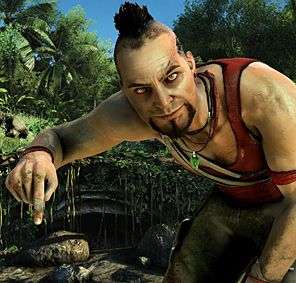 Considering the world is singing Far Cry 3’s praises – with some claiming it to be a Game of the Year – you might read my view as somewhat controversial. However, it’s true, and that’s a fact, even if you don’t realise it. Now, let’s not start off on the wrong foot here – I love Far Cry 3, it’s just, well, Far Cry 2 is better, in spite of and sometimes because of its notorious glaring flaws: impossibly clever AI, borderline broken stealth (thanks in part to the impossibly clever AI), and outposts that replenish its supply of guards the second you turn your head away made it near unplayable for some. Indeed, it took until my fifth attempt at Far Cry 2 before I actually started to enjoy the title proper, and even then it was five hours in before I actually got into the swing of things. Those preliminary hours hold some of my most frustrating gaming memories of all time, but the proceeding twenty-plus hours also hold some of my greatest, which is something I cannot say the same about regarding Far Cry 3.
Considering the world is singing Far Cry 3’s praises – with some claiming it to be a Game of the Year – you might read my view as somewhat controversial. However, it’s true, and that’s a fact, even if you don’t realise it. Now, let’s not start off on the wrong foot here – I love Far Cry 3, it’s just, well, Far Cry 2 is better, in spite of and sometimes because of its notorious glaring flaws: impossibly clever AI, borderline broken stealth (thanks in part to the impossibly clever AI), and outposts that replenish its supply of guards the second you turn your head away made it near unplayable for some. Indeed, it took until my fifth attempt at Far Cry 2 before I actually started to enjoy the title proper, and even then it was five hours in before I actually got into the swing of things. Those preliminary hours hold some of my most frustrating gaming memories of all time, but the proceeding twenty-plus hours also hold some of my greatest, which is something I cannot say the same about regarding Far Cry 3.
Anyone who persevered through those aforementioned flaws can attest that – in a weird and twisted kind of way – they enhanced the Far Cry 2 experience. It’s one of those rare releases where the faults, however deep they may root, genuinely add to it. After a certain amount of time you can’t help but begin to wonder if it would be worse off if these issues were fixed as you soon learn to accept and appreciate them as a fundamental part of the experience as the shooting and fictional African state open-world setting. They also inject a large dose of excitement into the emergent gameplay too, and as with any good sandbox game, it’s the emergent moments that form the backbone of the oft-legendary water-cooler stories you come away with.
Now, I could tell you a number of anecdotes relating to GTA, Assassin’s Creed and Fallout, or I could tell you about the time how once, in Far Cry 2, a botched attempt to sneak through an enemy outpost (like any of them are successful) turned into a massive shootout of Heat-level proportions before escalating into a jeep chase across half of the 50km2 map. After putting some distance between me and my pursuers, I pulled a 180o turn, plastered some C4 onto the bonnet of my jeep, waited for the enemy convoy to roll into view (the AI will always find you even if you’ve broken line of sight – impossibly clever, remember) and hammered the accelerator with the intent of a head-on collision, before bailing out at the last moment and detonating the explosives on impact, the resulting explosion setting the surrounding plains alight as I picked off the remaining stragglers with gunfire whilst desperately trying to avoid the flames myself. Anyone unfortunate enough to not get pumped full of lead got cooked instead. That, my friends, is a story, and it’s beyond anything you’ll ever encounter in Far Cry 3, and not just because C4 doesn’t stick to surfaces, thus eliminating that classic tactic.
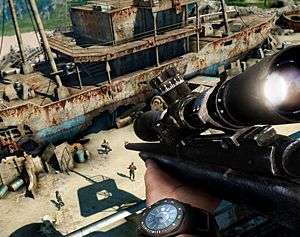 With hindsight, the closest thing to an emergent story I ever witnessed in Far Cry 3 was seeing a tiger hunt a wild boar before turning its appetite onto a nearby group of pirates, which is all well and good, but pales in comparison to the epic heroics of my Far Cry 2 tale. Watching the wildlife prey on one another like David Attenborough and using it to your advantage is about as interesting (although far from dull) as Far Cry 3’s emergent gameplay gets, because in all but eradicating it’s predecessor’s oft-over-criticised imperfections it has unintentionally taken out what made that title so nail bitingly tense and memorable. Persistently aggressive AI can be an absolute pain in the backside, true, but AI that gives up the chase too easily can be just as disappointing, if not moreso.
With hindsight, the closest thing to an emergent story I ever witnessed in Far Cry 3 was seeing a tiger hunt a wild boar before turning its appetite onto a nearby group of pirates, which is all well and good, but pales in comparison to the epic heroics of my Far Cry 2 tale. Watching the wildlife prey on one another like David Attenborough and using it to your advantage is about as interesting (although far from dull) as Far Cry 3’s emergent gameplay gets, because in all but eradicating it’s predecessor’s oft-over-criticised imperfections it has unintentionally taken out what made that title so nail bitingly tense and memorable. Persistently aggressive AI can be an absolute pain in the backside, true, but AI that gives up the chase too easily can be just as disappointing, if not moreso.
Undisputedly though, where Far Cry 2 excels most, more than any other game before or since, is in immersing you in its world. The opening taxi ride to your hotel, while not as iconic as Half-Life’s tram ride through Black Mesa or BioShock’s descent into Rapture, does a grand job of setting the scene. For the best part of ten minutes you soak up the surrounding scenery, the atmosphere positively radiating from the screen as you spy a raging fire, animals grazing (although sadly none of the carnivorous variety – something Far Cry 3 is slightly over-reliant on) and guards patrolling the roads. You also get a grasp on how the civil war is affecting the people who live there, if not from what you see but what you hear from your informative cabbie.
But Far Cry 2 takes its immersion even further, even beyond a minimal HUD. This was a game where the map screen saw you pulling out an actual map, where badly degraded weaponry can jam in the heat of battle, and where fast-travel is restricted to about a dozen bus stops that are few and far between – if you wanted to get somewhere you had to make your own tracks. It was a title about forward-planning as much as shooting bad guys, as you should expect in such a hostile country in order to survive, and if you failed to take into consideration such complications then you almost certainly weren’t going to make it, probably placing you among those who wrongly call these clever flourishes a hindrance.
Most importantly though, Far Cry 2 made you work, made you sweat, its unforgiving world relentlessly hunting you, tiring you, trying to kill you, with no remorse. Even your buddies, the other possible playable characters you decided not to choose at the beginning who instead become NPCs you meet on your travels through the story, turn against you in an unexpected and masterstroke of a twist towards the climax for one almighty showdown. Turns out the only person you can trust is the man you were sent to kill in the first place. So when you triumphed over such steep odds it felt all the more rewarding. You might say Far Cry 2 is the Dark Souls of the FPS genre, or as close as it’s ever got.
Far Cry 3, in contrast, strips all this back in a bid to make the game more accessible, more casual. Not that there’s necessarily anything wrong with that – for Ubisoft to break even it’s the casual market it needs to get on-board – but in doing so Far Cry 3 can at times feel as if it’s suffering from a classic case of “press this button to win” syndrome, especially when boss fights resort to QTEs, which everyone loves, right?
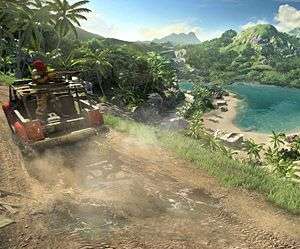 By the story’s midway point protagonist Jason Brody is so empowered that every enemy encounter is a breeze, rarely requiring much effort on the player’s behalf to succeed. It’s all well and good for a game to be a power fantasy, but is that what we want from a Far Cry game? It swaps out Far Cry 2’s hardcore nature for arcadey thrills, the slow and chunky movement replaced by something more smooth and swift, and the incessantly dangerous yet natural feeling and beautifully stunning landscape exchanged for a more artificial flavoured Asian archipelago. Far Cry 3’s Rook Islands never convinces as a credible place, with temples, bunkers and settlements sprinkled across it like hundreds and thousands on a cake, reinforcing the notion that this place was designed on a computer (which technically it was, but that’s not the point) rather than formed over time.
By the story’s midway point protagonist Jason Brody is so empowered that every enemy encounter is a breeze, rarely requiring much effort on the player’s behalf to succeed. It’s all well and good for a game to be a power fantasy, but is that what we want from a Far Cry game? It swaps out Far Cry 2’s hardcore nature for arcadey thrills, the slow and chunky movement replaced by something more smooth and swift, and the incessantly dangerous yet natural feeling and beautifully stunning landscape exchanged for a more artificial flavoured Asian archipelago. Far Cry 3’s Rook Islands never convinces as a credible place, with temples, bunkers and settlements sprinkled across it like hundreds and thousands on a cake, reinforcing the notion that this place was designed on a computer (which technically it was, but that’s not the point) rather than formed over time.
The reason it doesn’t feel real may be derived from the idea that the islands exist on the hinges of reality, as the constant references to Alice In Wonderland and the dev’s very own words prior to release suggest, but the setting also possesses a slight repetitive tinge, in a way that comes close to bringing Just Cause’s San Esperito to mind, and once you’ve seen one ancient temple or decayed World War II bunker you’ve more or less seen them all. There’s no tangible sense of danger or urgency when Rook Islands’ equivalent of Tesco Express resides just over every other hill to restock your supplies at either.
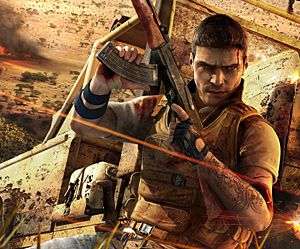 You could argue that all of the above ultimately comes down to a matter of taste. It’s no secret that some players wholeheartedly loathed Far Cry 2’s insistence on grounding itself in reality as much as possible, but Far Cry 2 is superior in other areas, chiefly the series’ trademark attitude to player freedom. Looking back over my playthrough of Far Cry 3, I could recall very few missions where I was given total freedom to do what I wanted, where I wanted. I’m confident in wagering that a good two-thirds of the main story missions take place within the confines of underground caverns and tight corridors of enemy strongholds or, in one level that owes a lot to Uncharted 3, a sinking ship. For the pacing purposes, a scripted linear level and the occasional on-rails set-piece can work wonders, but when Far Cry 3 drops invisible barriers within its so called open-world I can’t help but feel things are a bit awry.
You could argue that all of the above ultimately comes down to a matter of taste. It’s no secret that some players wholeheartedly loathed Far Cry 2’s insistence on grounding itself in reality as much as possible, but Far Cry 2 is superior in other areas, chiefly the series’ trademark attitude to player freedom. Looking back over my playthrough of Far Cry 3, I could recall very few missions where I was given total freedom to do what I wanted, where I wanted. I’m confident in wagering that a good two-thirds of the main story missions take place within the confines of underground caverns and tight corridors of enemy strongholds or, in one level that owes a lot to Uncharted 3, a sinking ship. For the pacing purposes, a scripted linear level and the occasional on-rails set-piece can work wonders, but when Far Cry 3 drops invisible barriers within its so called open-world I can’t help but feel things are a bit awry.
One level approaching half way through the story tasks you with clearing out a small encampment, and literally a few steps away from your starting point is a radio tower which – naturally – I wanted to climb for a better vantage point, and to reveal this particular segment of the island on the map screen (in a way that is totally not unrelated to stablemate series Assassin’s Creed’s synchronisation points). I approached the tower, psyching myself up for another piss-poor platforming sequence (question: with the exception of Valve, why do developers think that first-person platforming is any good?) only to be told that I was leaving the mission area.
Granted, Far Cry 3 may be running a lot of things under the hood (and it shows) but the mission area could quite easily have been extended a few more feet, and sadly this wasn’t a one-off case. Sure, you’re given enough room to swing your arms around in, but Far Cry 2 offers a whole country to explore at nearly all times and looks even better, technically and visually on console, whilst doing so despite being over four years old. Yet, if you so much as tread a toe over the invisible borders in Far Cry 3’s missions it’s an instant fail, and that’s if you haven’t already had to restart from a couple of other pre-determined insta-fail sections anyway.
Far Cry 3 also stumbles in trying to engage you in its story and characters. By the time you arrive at your hotel in Far Cry 2 it’s put a gun in your hand and given you a reason to fight. Oh, and malaria. Yes, Far Cry 3 does the same (minus the malaria) but its reason to pick up a gun is a less motivating one. Jason Brody and his band of misfits are such a dislikeable, arrogant, self-indulging bunch that you’ll ponder whether they’re worth the hassle of rescuing. You’ll probably find yourself rooting more for the villains instead, which is arguably Far Cry 3’s strongest suit, even if the show-stealing Vaas is criminally underused. It’s no exaggeration when I tell you that you’ve already seen most of his screen time in the E3 demos, but luckily just as insane baddies Buck and Hoyt save the day, or ruin it depending on how you look at things.
 The truth is that Far Cry 2’s descent into the Heart of Darkness is much more harrowing and haunting than Far Cry 3’s trippy tumble down the rabbit hole. The plot feels – dare I say it – less serious, dabbling in the ludicrous at times, but Far Cry is no stranger to ludicrous, with the original turning into sci-fi hokum arguably its weakest link. At least Far Cry 3’s wackiest turns aren’t quite as silly, even if an insipid boss battle against a giant ink monster in a hallucination sequence cuts it close.
The truth is that Far Cry 2’s descent into the Heart of Darkness is much more harrowing and haunting than Far Cry 3’s trippy tumble down the rabbit hole. The plot feels – dare I say it – less serious, dabbling in the ludicrous at times, but Far Cry is no stranger to ludicrous, with the original turning into sci-fi hokum arguably its weakest link. At least Far Cry 3’s wackiest turns aren’t quite as silly, even if an insipid boss battle against a giant ink monster in a hallucination sequence cuts it close.
Now I’m not so naïve to not understand Far Cry 3’s messages, or blind enough to not see when and where it steps into deeply dark territory, but it conveys its themes in a manner that never fully resonates. Having Brody gun down masses of people with a minigun, or roast them with a flamethrower, while shouting “THIS IS FUCKING AWESOME” at the top of his voice may be Ubisoft’s way of demonstrating how Brody’s mind has been corrupted by insanity, but it’s not as adeptly handled or nuanced as, say, Spec Ops: The Line, relying too heavily on hallucinatory storytelling and not making the player feel anything for Brody or his friends at all. It’s up to interpretation whether that’s intentional, but to not encourage a greater emotional stake from the player will be seen as a missed opportunity for some, myself included.
 The fact remains that killing is made far too easy, from both a narrative and gameplay mechanic perspective, almost to the point where – at the risk of sounding like a Daily Mail reporter – it glamorises it. Brody can flit between such devastating styles of killing with sod-all combat training that it almost feels out of place in a Far Cry title. It’s making a statement about us gamers and our playing habits, but Far Cry 2 takes a more basic yet ultimately more effective approach; you’re in a bad place doing bad things, and it damn well makes sure you have a hard time doing so. Its intensity far overshadows the fact that it too is lacking in story and characters, but it never forces you to care about characters you don’t want to either.
The fact remains that killing is made far too easy, from both a narrative and gameplay mechanic perspective, almost to the point where – at the risk of sounding like a Daily Mail reporter – it glamorises it. Brody can flit between such devastating styles of killing with sod-all combat training that it almost feels out of place in a Far Cry title. It’s making a statement about us gamers and our playing habits, but Far Cry 2 takes a more basic yet ultimately more effective approach; you’re in a bad place doing bad things, and it damn well makes sure you have a hard time doing so. Its intensity far overshadows the fact that it too is lacking in story and characters, but it never forces you to care about characters you don’t want to either.
It may sound like I’m casting Far Cry 3 in a dark light here, but that is not my intention. It’s clearly a fantastic game and one well worth picking up if you have the slightest interest in open-world games or First-Person Shooters, but is it really 2012’s Game of the Year? I beg to differ; I think that 2012 was littered with so much disappointment (not bad games, just disappointment) that everyones’ hopes strayed to the last big release of the year, and that release just so happened to be Far Cry 3. Take off those rose-tinted glasses and you’ll see that the true essence of a Far Cry game has been to a certain extent compromised, primarily the freedom, boxing you in with both physical and invisible walls.
On a final note, a word of warning: just because I say Far Cry 2 is better does not necessarily mean that you’ll personally enjoy it more. Compared to Far Cry 3 it’s the smarter, richer, and more beautiful of the pair, but it is not for the faint of heart You’ll need to be forgiving, patient and strong-minded to come out alive (the horror, the horror). Far Cry 3 is admittedly brilliant, and you can trace back the reasons as to why everything in it is as it is, but if you’re like me, it never satisfies wholly. As for Far Cry 2, it’s the ultimate in open world FPSes, and don’t let anyone tell you otherwise.
Last five articles by Tim
- Future Perfect
- A Thief's Alternative End
- Uncharted 4: A Thief’s End - Review
- Ratchet & Clank - Review
- Gears Of War 4 – Multiplayer Beta Impressions














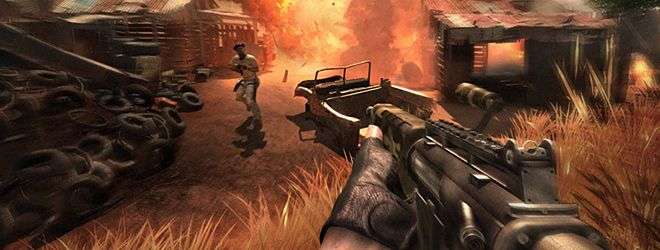
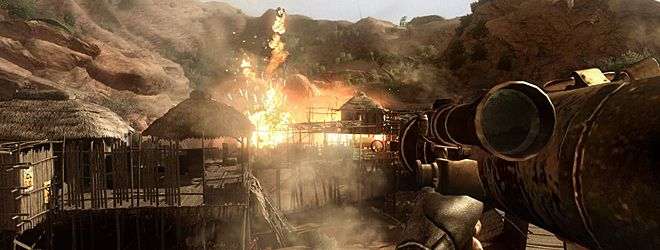
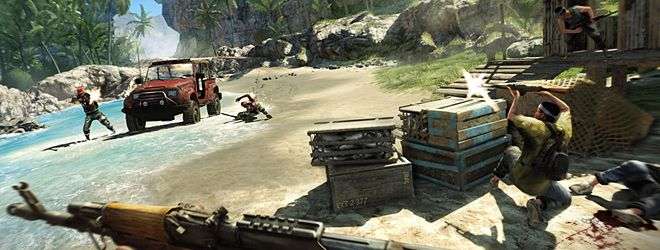
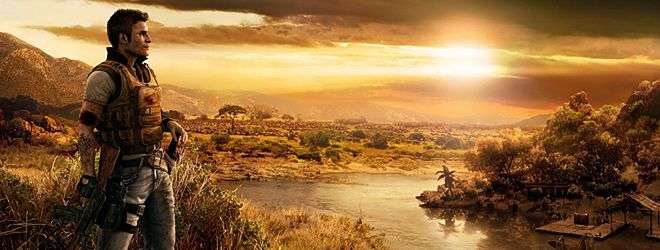





There are no comments, yet.
Why don’t you be the first? Come on, you know you want to!